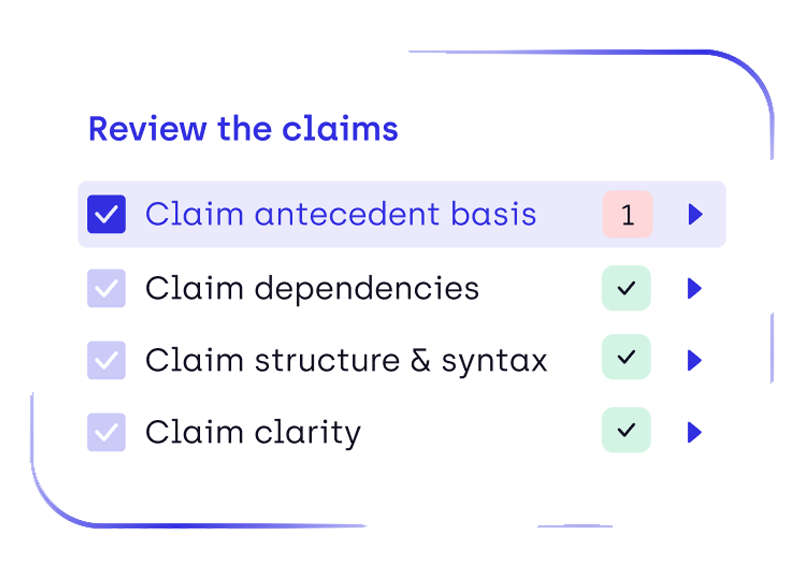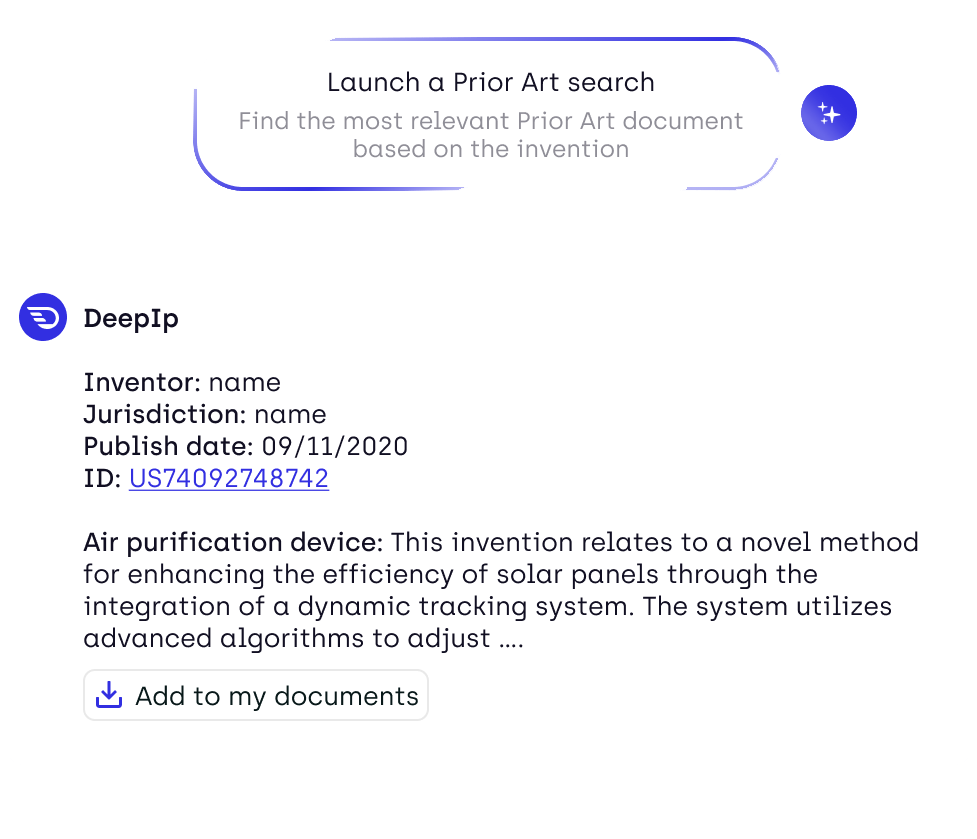Table of content :
- The Challenges of Patent Portfolio Management
- How Agentic Portfolio Intelligence Transforms Patent Portfolio Management
- Thematic Clustering of Patents for Business Planning
- Economic Evaluation and Decision Support
- Linking Patents to Projects and Products
- Standards Compliance and Interoperability
- Technology, Hosting, and Customization
- Conclusion
The Challenges of Patent Portfolio Management
For many companies, patent portfolio management has historically been a largely administrative task, focused on keeping lists of patents in spreadsheets or basic databases. Traditional IP management tools track filing dates, expirations, and simple tags (like technology area or product line), but they lack strategic depth. This means that while you might know when a patent expires or what category it falls under, you often lack insight into how the portfolio supports business goals or where the untapped opportunities lie. The result is that many patent assets remain underutilized—unless a patent is actively protecting a product or generating licensing revenue, it risks sitting idle as a resource-draining artifact instead of a value-adding asset.
Compounding this issue is scale. Modern technology companies can hold hundreds or thousands of patents, spread across numerous markets and technologies. For example, IBM alone has over 155,000 patents worldwide (as of 2025). Sifting through such large portfolios to find what’s truly valuable or strategically relevant is hugely challenging. Manually reviewing each patent for relevance to current products, competitor products, or market trends is slow, subjective, and unscalable. Important insights often remain hidden: a critical patent might cover a competitor’s product without anyone realizing, or a cluster of patents in a new tech area might signal a market opportunity that the business isn’t leveraging. In practice, untapped IP can become a net loss – maintenance fees and administrative overhead mount up, while missed licensing or enforcement opportunities silently deplete potential ROI. As portfolios grow, this problem only intensifies, and manual management becomes impractical.
The core challenge is clear: organizations have too much IP and too little insight. To turn a patent portfolio into a true strategic asset, companies need to look beyond basic administration. They must efficiently evaluate the strategic relevance and value of each asset and of the portfolio as a whole. This includes understanding how patents align with products and R&D plans, how they stack up against competitors’ portfolios, and where opportunities for monetization or risk mitigation exist. Until recently, doing this at scale was nearly impossible – the effort required to analyze every patent’s strength, relevance, and potential use often outweighed the perceived benefits, making thorough portfolio reviews rare. Thankfully, AI-driven solutions are changing this equation, enabling a more proactive and strategic approach to portfolio management.
How Agentic Portfolio Intelligence Transforms Patent Portfolio Management
Agentic Portfolio Intelligence introduces a new paradigm for managing and extracting value from patent portfolios. Much like Agentic Search reframed prior art search as an autonomous AI-driven process, Agentic Portfolio Intelligence treats portfolio management not as passive record-keeping, but as an active, continuous analytical process. Instead of merely cataloguing patents, the system acts as an autonomous research agent that consolidates data, monitors developments, and uncovers insights in the portfolio on an ongoing basis. It’s designed to bridge the gap between the legal details of patents and the strategic business context, turning raw patent data into actionable intelligence.
At a high level, Agentic Portfolio Intelligence works by first creating a unified, enriched view of your entire patent portfolio (and relevant external IP) and then layering on intelligent analyses that answer key strategic questions. It uses advanced AI (including language models and knowledge graphs) to understand the content of patents – their claims, technical domains, legal status, and linkages – and to reason about how these patents relate to products, markets, competitors, and standards. The system iteratively scans and learns from both your data and external sources, much like a virtual patent analyst that never tires. Crucially, it doesn’t just dump data on the user; it presents structured, visually intuitive outputs that highlight important patterns and recommendations. From high-level dashboards for executives to detailed claim charts for patent attorneys, the platform delivers insights tailored to different stakeholders. In the following sections, we break down the core capabilities of this agentic portfolio intelligence approach and how each transforms a traditionally tedious aspect of portfolio management into a strategic advantage.
1. Unified Portfolio Consolidation and Segmentation
The foundation of effective portfolio intelligence is a clean, consolidated view of all patent assets. Agentic Portfolio Intelligence tackles this by normalizing and grouping patent data so that the portfolio can be understood at a glance. It performs assignee normalization, resolving inconsistencies in names (e.g. unifying “International Business Machines”, “IBM Corp.” and “IBM” into a single entity) to accurately reflect true ownership. This ensures that when you analyze holdings or compare competitors, you’re seeing a reliable picture rather than fragmented records.
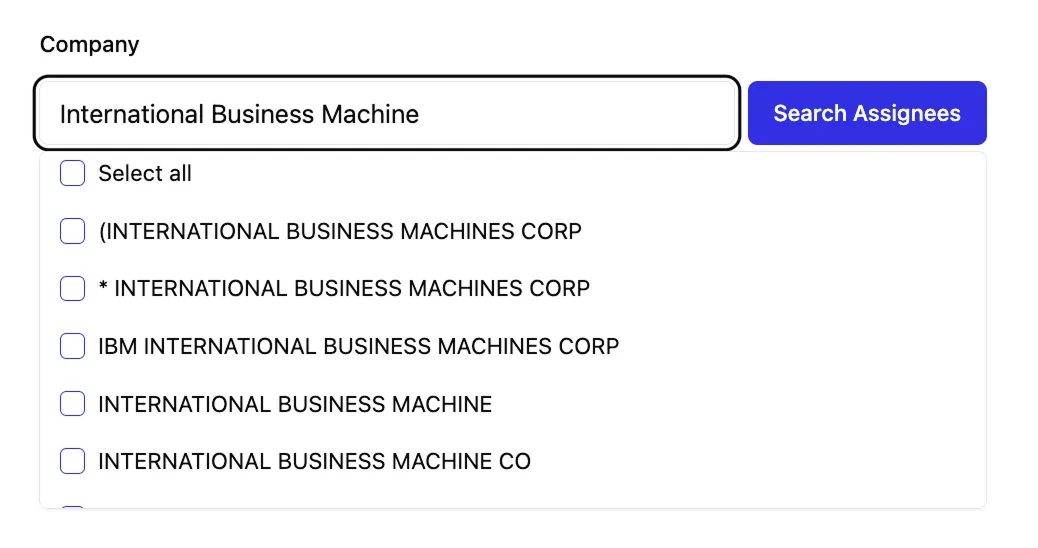
The system also groups related patents into families, so that inventions filed in multiple countries are treated as one unit. This consolidation cuts through clutter – for example, a single invention with filings in the US, Europe, and Japan will appear once (with family members linked), instead of three separate entries.

With a normalized, de-duplicated portfolio in place, the software enables rich segmentation to slice and dice the portfolio from different angles. Patents can be filtered and viewed by technology classification (leveraging standardized CPC/IPC codes to group technologies), by market or product line, by patent stage (e.g. filed, granted, expired), by geography, or by custom tags like litigation status or licensing potential.
The interface provides dynamic filters and search queries so users can quickly hone in on relevant subsets – for instance, all granted patents in a certain CPC subclass in Europe, or all pending applications in AI-related tech filed in the last 5 years. Users can save these filtered views (e.g. a “5G portfolio in US/EP” view or a “Competitor X’s automotive patents” view) for one-click access later.
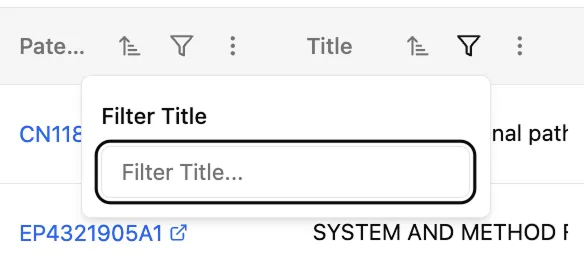
Additionally, Agentic Portfolio Intelligence supports agentic custom segmentation: using AI, it can cluster patents based on any combination of attributes or even underlying text similarity. This means beyond standard filters, the system can propose segments like “patents related to sensor fusion for driver monitoring” or “green energy storage patents” by analyzing the content of the patents themselves, even if they span multiple official categories.

Presentation of this consolidated and segmented data is key. The software offers intuitive table views with spreadsheet-like filtering, sorting, and grouping – handy for power users who want to work with the data directly.
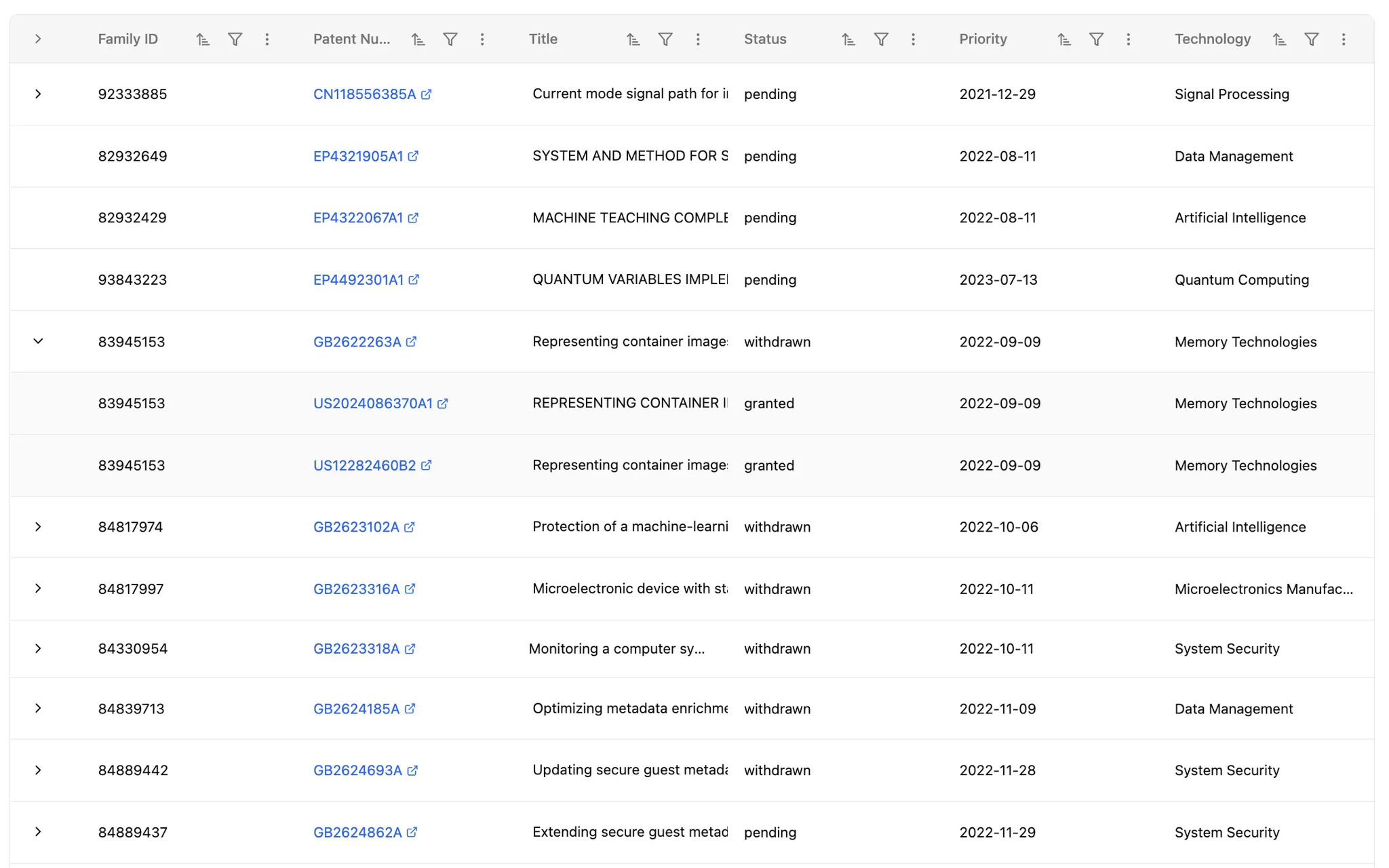
But it goes further with interactive portfolio dashboards. These dashboards include line charts (e.g. filing trends over time), bar charts (e.g. portfolio breakdown by technology or jurisdiction), and even sunburst to visualize hierarchical breakdowns (such as portfolio by tech area -> sub-area -> assignee).
For example, you might see a sunburst chart showing the proportion of patents in various technology domains and how they split across business units.
All charts and views update in real-time as filters are applied. This visual analytics approach helps identify patterns at a glance – say, a particular technology area where your filings have declined in recent years, or a competitor’s patenting surge in a segment you’ve ignored.

Finally, all this data can be exported to Excel or CSV with one click, ensuring you can share results or do offline analysis. The focus on consolidation and segmentation means that portfolio managers spend less time reconciling data and more time understanding it – seeing the forest and the trees in their patent holdings.
2. Strategic Use of Patents Beyond Administration
Where traditional tools stop at organizing your patents, Agentic Portfolio Intelligence begins to analyze and strategize, treating patents as dynamic assets. It provides a suite of AI-driven analyses that support the strategic use of patents – for both your own portfolio and those of competitors – far beyond mere docketing. Some of the key strategic insight features include:
Coverage & “Moat” Analysis
How strong is your patent coverage in critical technology areas, and where are the gaps? The platform automatically generates technology whitespace maps that compare your patent coverage to competitors’. It analyzes the breadth of your patent claims and their overlap with competitors’ claims to identify areas where you have a defensive “moat” versus areas where competitors also hold patents.
This is done at a fine-grained claim-element level – the AI can tell which specific technical features are covered by whom. By emphasizing factors like claim breadth and legal blocking power, the system highlights patents that serve as strong defensive assets. For instance, you might discover that you have a cluster of core patents with broad claims that competitors cite frequently (indicating a strong blocking position), or conversely, that a competitor has claims encircling one of your products (indicating a potential vulnerability).
The result is a visual map of the innovation landscape: which technology spaces are crowded and which are open, where you have unique strength, and how your portfolio stacks up against others. This insight feeds directly into R&D strategy (identifying white spaces to invent in) and legal strategy (identifying where you have freedom to operate or where you might need to license/buy patents).
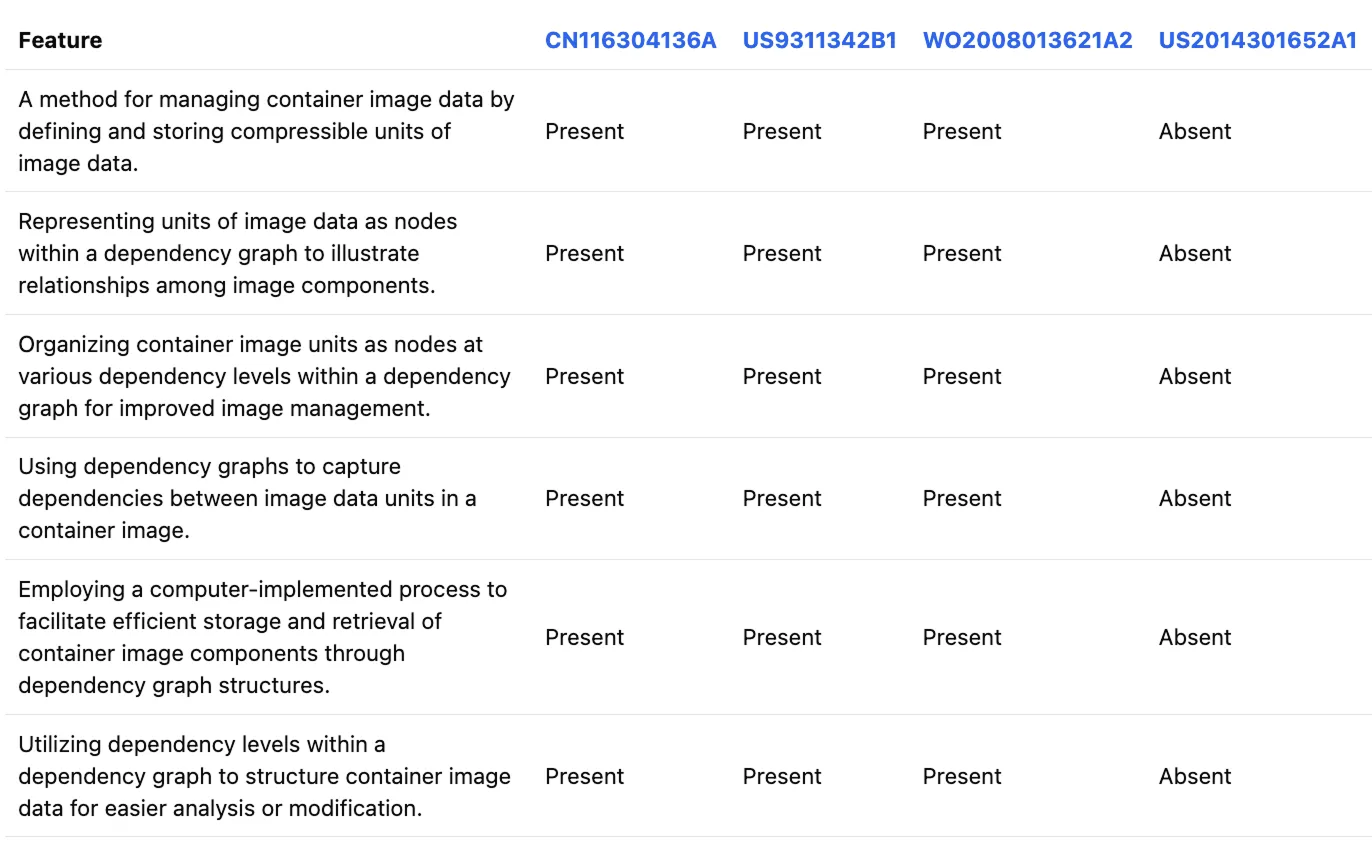
Freedom-to-Operate (FTO) Triage
Ensuring that a new product or feature doesn’t infringe someone else’s patent is a critical, time-consuming task. The software accelerates FTO analysis by performing agentic claim-to-product mapping. You can input a description of a product (or import a product specification, user manual, etc.), and the AI will match product features to patent claims in the global database, flagging any concerning overlaps.
It generates preliminary claim charts that show exactly which patent claim element might cover which product feature, complete with links to the source patent text for evidence. Each potential risk is given a risk score based on factors like claim strength and similarity to the product feature. This automated FTO triage quickly surfaces the patents most likely to be problematic, so legal teams can focus their detailed analysis where it matters.
By providing precise claim-to-product mappings, the system helps teams make data-driven decisions on whether a feature is clear to launch or needs redesign/licensing.
The evidence-backed charts and risk rationale also make it easier to explain FTO conclusions to engineers or executives, bridging the gap between legal analysis and product development.
Invalidity Triage (Patent Quality Checks)
Not all patents are created equal – some may be vulnerable to invalidation if challenged. Agentic Portfolio Intelligence proactively scans each patent (yours or a competitor’s) for potential weaknesses by analyzing its prosecution history and searching for prior art.
The system’s autonomous prior art search (leveraging the same Agentic Search capabilities used in patentability analysis) looks for publications or patents that the examiner might have missed. It also reviews the file history for red flags (e.g. claim amendments that were made to overcome rejections, which might indicate narrow novelty).
The AI then highlights patents that have a higher risk of invalidity and explains why – perhaps it found an earlier publication that discloses a key element, or multiple references that collectively cover the claims. This is invaluable for triaging which patents might not withstand litigation.
If it’s your own portfolio, these patents might be candidates for pruning or careful monitoring (or strengthening via continuations if possible).
If it’s a competitor’s patent that blocks you, finding a weakness could open the door to design-around or opposition. In essence, the software performs a continuous stress test on patent validity, so that you are never blindsided by a low-quality patent (yours or someone else’s). It focuses human attention on the cases that truly need legal expertise, potentially saving huge costs by avoiding reliance on shaky patents or by uncovering prior art defenses early.
Evidence-of-Use (EoU) by Competitors
One of the most strategic uses of a patent portfolio is to generate licensing revenue or deter competitors by enforcing patents that they infringe. Agentic Portfolio Intelligence aids this by detecting where competitor products likely map onto your patent claims.
Through web crawling and data integration, the system monitors competitor product announcements, manuals, data sheets, and even firmware/software (where accessible). It then uses NLP to compare those product descriptions against the technical disclosures and claims in your portfolio. When it finds a strong match – e.g. a competitor’s product specification that matches an element in one of your patent claims – it flags it as a potential infringement/licensing opportunity.
The platform can produce an EoU claim chart analogous to an infringement analysis, showing which claim elements are implemented by the competitor’s product (with quotes from their documentation as evidence).
This essentially automates the scouting for licensing targets. The AI can even rank these findings by significance, combining factors like how important that product is (sales or strategic importance for the competitor) and how strong the patent is. By identifying potential licensees and their overlapping products automatically, the system ensures you don’t leave money on the table – if a rival is unwittingly (or knowingly) using your technology, you’ll be alerted and armed with initial evidence.
This feature transforms the patent portfolio from a passive shield into an active sword, supporting offensive IP strategies like out-licensing and enforcement.

Standard-Essential Patent (SEP) Assessment
For companies in industries with technical standards (telecom, codecs, etc.), determining if any of your patents are essential to a standard (or if a competitor’s are) is crucial for licensing and compliance. Agentic Portfolio Intelligence includes SEP analytics that autonomously checks your patents against standards documentation. It integrates databases of standards (for example, 3GPP specs for telecom, IEEE standards, ISO/IEC standards documents, etc.) and uses AI to semantically match patent claims to specific sections of these standards.
This claim-to-standard text alignment can flag patents that likely cover mandatory parts of a standard. As external evidence, some standards bodies publish patent declarations; the tool cross-links to those but goes further by finding undeclared potential SEPs. Using AI to compare claims to standard sections has proven effective in filtering likely SEPs.
The result for your team is a list of patents that might be standard-essential, each with the standard clause it seems aligned to. This is incredibly useful for both licensing negotiations (e.g. identifying which of your patents might demand FRAND licensing, or if a supplier might owe you royalties) and for risk management (if a competitor has a hidden SEP, you want to know before you implement that standard).
The SEP assessment is yet another example of the system supporting strategic decisions: it gives visibility into how portfolios intersect with industry standards, a task that is notoriously data-intensive due to the thousands of pages of standards documents and millions of declared patents.

Dynamic Patent Valuation
The platform doesn’t rely on static quality scores – it employs agentic, scenario-driven patent valuation to estimate the value of patents or groups of patents under various conditions. Essentially, autonomous agents continuously evaluate patents across multiple value dimensions and update these evaluations as conditions change. The system provides an explanation of its reasoning, not just a number, making the valuation transparent and actionable. Key factors it considers include:
Scope & Validity (the breadth and fundamental strength of the claims, whether the patent could be easily invalidated, and how much term is left),
Market Relevance (the size and growth of the market that the patent’s technology targets, and how central that tech is to current trends),
Commercial Impact (is the patent currently used in a revenue-generating product? Could it save costs or generate licensing income? Essentially, its contribution to the business),
Enforceability (how easy it is to detect infringement and how likely the patent is to hold up in court – e.g. are the claims clear and specific enough to enforce? Does it have a history of citations indicating proven value?), and
Portfolio/Standards Position (does this patent sit in a crowded space or a unique one? Is it well cited, indicating industry recognition? Is it part of a large family or one-of-a-kind? Could it be standard-essential?). Each criterion is scored in a field-normalized way and combined into an overall strength or value score. Importantly, the system can run what-if scenarios – for example, “What if the market for this technology doubles in size in five years?” or “What if a competitor product implementing this feature launches next year?” – and adjust valuations accordingly. Unlike simplistic valuations, the agentic approach provides a rationale: why it thinks Patent X is high-value (e.g. “broad claims, in a high-growth market, with evidence of use by major competitors”) or low-value (e.g. “narrow scope and expiring in 2 years”).
This continuous valuation helps in portfolio pruning (deciding which patents to maintain or abandon), investment decisions (which technologies to file more patents in), and monetization (pricing patents for licensing or sale). It aligns with known valuation principles that emphasize legal strength and market potential, but does so autonomously and dynamically. Essentially, it’s like having a diligent patent valuation analyst on call 24/7.
Together, these strategic analytics capabilities turn patent data into actionable intelligence. Instead of reacting to issues (like finding out too late that a competitor infringed one of your patents, or only learning in litigation that a patent was weak), you can be proactive. Agentic Portfolio Intelligence constantly monitors and interrogates your portfolio, surfacing insights that enable strategic IP management: strengthening your moat in core areas, avoiding infringement pitfalls (FTO), challenging or inventing around others’ IP (invalidity and whitespace), identifying licensing income opportunities (EoU, SEP), and making fact-based decisions on filing and maintaining patents (via valuation and patentability guidance). This shifts the role of the patent portfolio from a static insurance policy to a dynamic strategic weapon, aligned with business objectives and market movements.
3. Identifying Spin-Off and Licensing Opportunities
Beyond internal strategy, an intelligent portfolio platform should help realize external opportunities for monetization. Agentic Portfolio Intelligence includes dedicated features to spot patents that could be candidates for licensing, sale, or spin-off ventures. These go hand-in-hand with the strategic analyses above, but focus on pinpointing where your portfolio could create value through transactions or partnerships:
- Market–Tech Fit Flags: The system identifies patents that show signs of being underutilized internally but valuable externally. For instance, patents that receive strong citations from other companies (indicating others find the technology important) but which are not being used in your own products are flagged as potential licensing candidates. The logic is that if others are building on or referencing an invention you’re not exploiting, there might be a market for licensing it out. These “low internal use, high external interest” assets are essentially sleeping money. The platform uses citation analysis, industry keywords, and even venture data to tag such patents, potentially grouping them by who might be interested. This helps IP managers quickly form a list of patents that could be licensed or even spun out into a new venture focused on that tech.
- Inbound Interest & Adjacency Alerts: Agentic Portfolio Intelligence also monitors the external innovation landscape for signals that intersect with your portfolio. For example, if third-party researchers publish new scientific papers or startups announce products in a space that overlaps with the scope of your patents, the system will alert you. An example might be: you hold some patents on a specific sensor technology, and a competitor just published a whitepaper or demo about a similar sensor in their upcoming product – the AI would detect the adjacency of that disclosure to your claims and flag it. These alerts essentially tip you off when there is inbound interest near your IP. Such information is golden for business development: it could mean a potential licensee or buyer for those patents, or at least an opportunity to approach the third party for a cross-licensing discussion. It ensures you’re aware of others treading close to your IP turf.
- Auto-Bundling and Deal Support: One innovative feature is the platform’s ability to auto-generate licensable patent bundles. Rather than just identifying single patents, the AI can group complementary patents that together form a valuable package (for example, a set of patents across different countries all related to a specific technology, or a family of patents covering different aspects of a system).
By systematically surfacing these opportunities, the software helps ensure that no valuable asset stays hidden on the shelf. Companies can recoup R&D investments by licensing out technology they aren’t using, form spin-off companies around patent portfolios that don’t fit core business but have promise elsewhere, or simply sell off fringe patents to generate cash.
In large organizations, such opportunities are often missed because relevant information is siloed or not analyzed – Agentic Portfolio Intelligence breaks that barrier by continuously looking for value extraction opportunities in the portfolio.
4. Integrating External Data for Innovation Strength Assessment
A patent portfolio doesn’t exist in a vacuum – its significance is deeply tied to external factors like scientific advances, market trends, and competitive activity. Recognizing this, Agentic Portfolio Intelligence integrates diverse external data sources to enrich its analysis of innovation strength and context. By fusing multiple signals, the platform forms a more holistic view of each patent’s significance. Key external data integrations include:
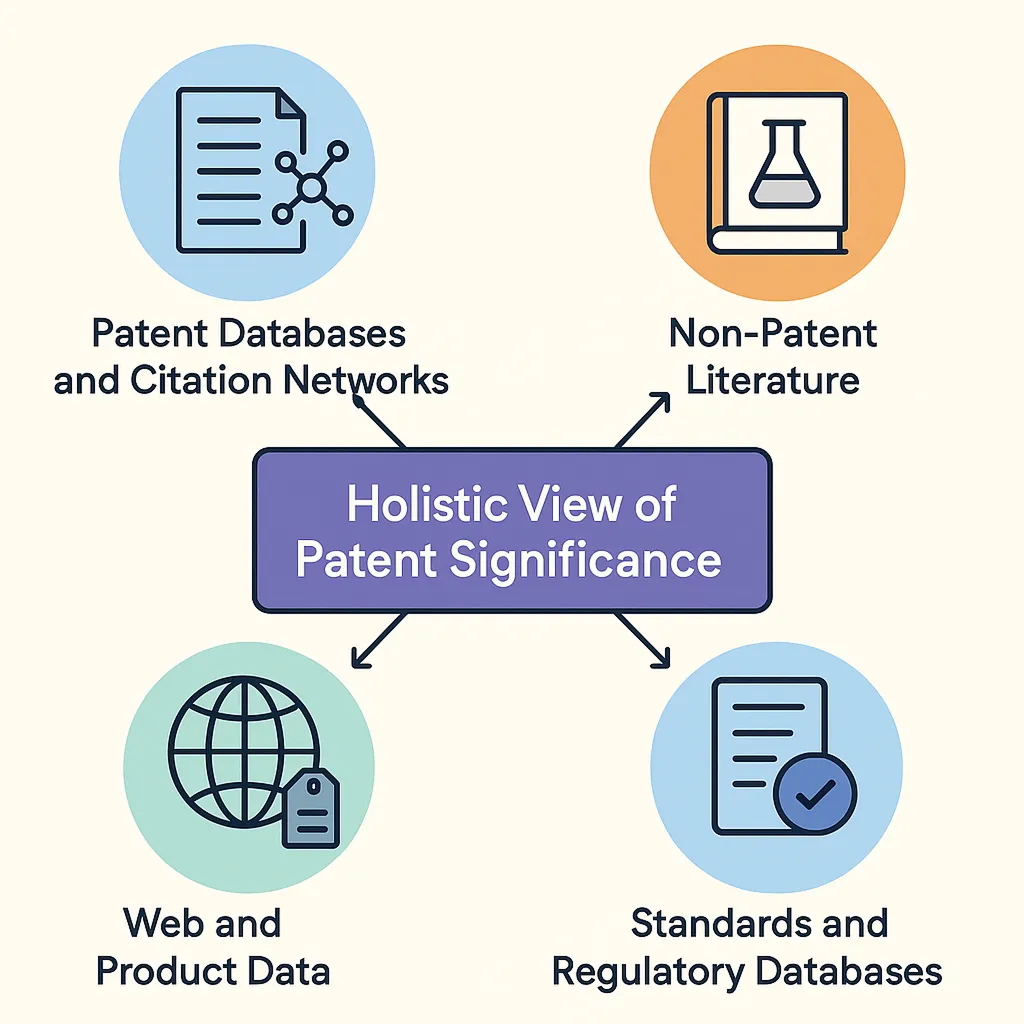
- Patent Databases and Citation Networks: The system pulls from global patent databases (USPTO, EPO, WIPO, etc.) not just for your own patents but to situate them in the global citation network. It ingests citations to and from each patent, identifying which patents are highly cited (a proxy for influence or fundamental technology) and which cite important prior art. By consolidating data from multiple sources (public and commercial), it ensures high data quality – for instance, using services like Derwent or LexisNexis PatentSight for cleansed, normalized patent data and citation metrics. This means metrics like patent family size, forward/backward citations, and legal status are accurate and up-to-date. The platform computes field-normalized citation scores (to account for citation rates varying by discipline) to score a patent’s centrality in the innovation network. Patents with many high-quality citations, wide family coverage, and active equivalents in major jurisdictions will score strong, as these are signals of a robust, impactful patent.
- Non-Patent Literature (NPL): Scientific publications, academic research, technical standards drafts, and even preprint servers are mined to contextualize the portfolio. If a patent is based on cutting-edge science, the system tracks related literature to see if new research is citing or building on that concept. This indicates whether the patented technology is still advancing or relevant. Additionally, by linking NPL to patents, the AI can identify if your patents are mentioned in important journals or if new papers propose alternatives to your patented solutions. High connectivity with NPL can elevate a patent’s perceived technical significance, while a lack of it might indicate the field has moved on. All this helps gauge the innovativeness and staying power of the patented technology.
- Web and Product Data: The platform doesn’t limit itself to formal publications. It crawls press releases, product brochures, and websites of your company and competitors. Why? This data helps correlate patents to real-world products and market activity. For example, if your competitor just announced a new AI-powered gadget and you have patents in that specific AI technique, the system draws that connection (and might flag a potential EoU scenario as discussed). It also looks at things like job postings or news that hint at tech development directions. This kind of integration ensures the patent analysis is grounded in market reality – a patent might be theoretically strong, but if the market is moving away from that tech, its value could diminish. Conversely, a patent might have seemed niche, but suddenly a competitor’s move makes it highly relevant. By ingesting web data, Agentic Portfolio Intelligence keeps its finger on the pulse of industry trends.
- Standards and Regulatory Databases: Particularly for assessing Standard Essential Patents (SEPs) as mentioned, the system integrates data from standards bodies (like IEEE, 3GPP, etc.) as well as regulatory filings (e.g. FDA databases for medical tech). This allows it to check, for instance, if a patent could be related to a new regulatory approved technology or required standard. It also flags if patents have been declared to standards (from databases of declarations). All this feeds into a patent’s strategic importance – being essential to a standard or tied to a regulated product can amplify a patent’s significance or licensing value.
By integrating external data sources in this way, Agentic Portfolio Intelligence ensures that when you assess your portfolio, you’re doing so with full situational awareness. It’s not just what patents you have, but how they stand relative to the state of the art, what the market is doing, and how competitors are behaving.
Thematic Clustering of Patents for Business Planning
When making high-level business decisions (like entering a new tech area, allocating R&D resources, or evaluating a merger), it’s vital to understand patent portfolios thematically – by technology themes or functional modules – not just by legal classifications. Agentic Portfolio Intelligence provides powerful tools for clustering patents by theme and function, which supports clearer business case development and strategic planning.
Firstly, the platform leverages established classification systems like Cooperative Patent Classification (CPC) and International Patent Classification (IPC) as a starting point. Every patent in the portfolio is tagged with its CPC/IPC codes, allowing quick grouping by known tech domains. For example, you can instantly retrieve all patents in class “A61B” (medical diagnostics) or “G06N” (AI computing) to see your coverage in those areas. The use of CPC/IPC provides a globally standardized segmentation of technology, which is useful for benchmarking against competitors or industry trends.
However, CPC/IPC can be broad or not specific to your particular business taxonomy. This is where the agentic clustering shines. Using NLP on the patents’ full text (titles, abstracts, claims) and even considering meta-data like inventors or cited references, the AI groups patents into thematic clusters that often correspond to functional modules or emerging topics. For instance, it might detect a cluster across your portfolio related to “sensor fusion for driver monitoring” or “blockchain-based security protocols” because several patents share that conceptual space even if they have different classifications. These clusters are surfaced with intuitive labels (the system can auto-generate a short description of the cluster theme) and can be adjusted by the user (you can merge, split, or rename clusters to match your internal terminology).


Such thematic clustering is extremely valuable. It allows portfolio managers and R&D teams to view patents the way the engineering or product teams think of them – e.g., “all patents related to our Autonomous Driving platform” or “patents around Battery Management.” Users can further refine clusters, effectively creating custom technology categories or modules. Once clusters are defined, the platform provides metrics and visuals per cluster: how many patents, their quality scores, filing trends, top inventors, and which business unit or product line they relate to. You can see, for example, that “Machine Learning Optimization” cluster has 20 patents, mostly high-value and mostly filed in the last 3 years, indicating it’s a growing focus. Meanwhile, an older cluster like “3G Wireless Techniques” might show many are expiring or of lower strategic fit now.
Clustering also helps identify redundancies and gaps. Seeing patents grouped thematically could reveal you have a lot of patents covering one narrow aspect of a technology (potential redundancy, maybe a candidate for pruning some), but maybe lack patents in an adjacent critical aspect (a gap that R&D or acquisition could fill). It’s a strategic roadmap tool – something typically done manually in patent landscape analyses, now automated and always up-to-date.
From a business case development perspective, these thematic groupings allow clear alignment of IP with projects and products. If a company is justifying investment in a new product line, they can easily pull the cluster of relevant patents and demonstrate, for instance, “we have X number of patents protecting this space, with Y more pending – giving us a solid competitive moat.” Or conversely, if considering an acquisition of another company’s portfolio, comparing clusters (ours vs theirs) can highlight synergies or overlaps. The platform essentially becomes a portfolio mapping tool, where patents are not just legal documents but are mapped to technology building blocks of the business.
Economic Evaluation and Decision Support
Intellectual property decisions often boil down to economics: Which patents are worth investing in? What’s the return on filing in another country? Should we continue prosecuting this application or abandon it? Agentic Portfolio Intelligence is equipped with tools for economic evaluation and decision support, helping IP managers and business leaders make these calls with data-driven confidence.
Agentic Patent Valuation
As mentioned earlier, the platform employs an agentic valuation approach. This goes beyond one-time scoring – it’s a continuous, criteria-based reasoning process. The system’s autonomous agents regularly re-evaluate patents, especially when new data arrives (a patent gets a new citation, a related product hits the market, legal status changes, etc.), and adjust their value assessments accordingly. The outcome is not just a numerical score but a valuation report with explanations.

For each patent (or a portfolio segment), the valuation agent produces an overall value rating along with breakdowns in categories such as:
- Technical Strength & Validity: Claim breadth/clarity, prior art risk, remaining life. Stronger if broad, well-drafted, and proven in examination or challenges.
- Market Relevance: Size and growth of target markets; alignment with strategic products. High if tied to large or critical markets.
- Commercial Impact: Current or potential use in products, licensing, or cost savings. Value rises with proven revenue or licensing leverage.
- Enforceability & Detectability: Ease of spotting infringement and practical enforceability. Boost if already enforced successfully.
- Portfolio & Standards Position: Role in larger family/cluster, citation strength, and SEP potential. Higher if central to standards or heavily cited.
The valuation agent blends these factors into scenarios. Instead of saying “Patent X is worth $5M” (which would be spurious precision), it might say “Patent X is high-value under a defensive enforcement scenario (strong blocking position with claim breadth and competitor dependency), moderate-value for licensing (niche market), and low-value if kept idle. Overall, given current conditions, we rate it in the top 10% of the portfolio.” It will note assumptions like “assuming market growth continues at 10% annually” or “assuming no immediate design-around.” This transparency is crucial for decision makers to trust the AI’s valuation – you see why it assigned a value.
Having such agent-driven valuations integrated in the platform means you can always have an updated sense of your IP’s monetary worth. It helps answer questions like: Which 10 patents are our most valuable (the ones we must definitely maintain)? Which are the least valuable (potentially okay to let expire or sell)? What’s the approximate value of this portfolio segment if we were to license or divest it? These were traditionally very expensive questions to tackle (involving consultants and manual analysis). Now they are available on-demand, with explainable AI backing.
Patentability and Filing Decision Support
Another critical decision area is at the front-end of the patent life cycle: deciding when and where to pursue patent protection. Agentic Portfolio Intelligence supports this by providing forward-looking analyses for new inventions and filing strategies:
- Patentability & Novelty Outlook: If you have an invention disclosure or concept, the platform can perform an Agentic prior art search (leveraging the same capabilities of the Agentic Search module) to gauge how novel the invention is. It will return a set of closest prior art references and even an initial patentability assessment (e.g., “Likely Novel” vs “Possible Obviousness Issues”) along with highlighted overlaps. From this, it derives a Novelty/Obviousness risk indicator – basically a score or warning level for how tough the patent examination might be. If the system finds very close prior art, it might caution that obtaining a patent will be high-risk (or the claims will have to be very narrow). Conversely, if it finds little on point, that’s a green light that the idea is quite novel. This helps IP managers decide early whether to invest in drafting and filing a patent application or perhaps keep the invention as a trade secret if patent prospects look poor. By integrating this with the rest of the portfolio tool, teams can also see if the invention overlaps with something they already have patented (avoiding redundancy) or if it fills a known gap (increasing its strategic importance).

- Jurisdiction and Coverage Recommendations: Once you decide to file a patent, the next question is where to file – which countries or regions. Traditionally this is based on markets of interest and budget, but Agentic Portfolio Intelligence brings data to the table. It offers a Jurisdiction Recommender that scores the expected value vs. cost of obtaining protection in each major jurisdiction for a given invention. It does this by combining factors: market size and presence (e.g., if your company or competitors operate heavily in Europe or China for this tech), enforcement environment (some jurisdictions are more patentee-friendly), and cost estimates (filing and maintenance costs over the life of the patent). It might output something like: “High ROI Jurisdictions: US, Germany, China; Medium ROI: Japan, UK; Low ROI: Canada, Australia, etc.” with reasoning such as competitor X has manufacturing in China (so a CN patent could block them), or the market for this product is huge in the US and EU but small elsewhere, etc. This data-driven approach helps avoid two pitfalls: filing everywhere blindly (which is costly but maybe unnecessary), or filing too narrowly (and missing out on protection where it matters). Essentially, it gives in-house counsel a quantitative backing for their international filing strategy, tailored to each invention’s context.

Finally, the decision support extends to maintenance and pruning – not just initial filing. The system can alert when a patent’s maintenance fees may outweigh its value (especially at expensive stages like certain annuities or renewal fees in various jurisdictions).
In summary, the economic evaluation and decision support features turn what used to be gut-driven or static decisions into evidence-based, scenario-tested decisions. Whether it’s valuing a patent, choosing where to file, or deciding to keep or drop an asset, the platform provides the analysis and data needed to justify and document those choices. This not only increases confidence in the IP strategy but also makes it easier to communicate to executives, who often demand the business case behind IP expenditures. Now those business cases can be backed by the same rigor as other investments, using the outputs of Agentic Portfolio Intelligence.
Linking Patents to Projects and Products
A common disconnect in many organizations is between the patent portfolio and the actual R&D projects or products those patents relate to. Agentic Portfolio Intelligence bridges this gap by allowing patents to be linked to internal project information and visualizing their usage in products or processes. This creates a living map of how intellectual property underpins the company’s innovation pipeline and offerings.
On the product side, one of the most powerful features is the Patent-to-Product Coverage Matrix. Imagine a matrix where one dimension lists key product features or components of a given product (or product family), and the other dimension lists relevant patent claims or patent assets.
Agentic Portfolio Intelligence can generate such a matrix for a selected product, essentially mapping which patents cover which features of the product. Each cell of the matrix might have a confidence score or badge indicating how strongly that patent claim likely covers the feature, and it could link to evidence (like a snippet of the patent describing that feature). For instance, for a smartphone product, features might be “Face Recognition Login, OLED Display, Wireless Charging, etc.” and the matrix will show which patents read on each of those features.
This is incredibly useful for visualizing coverage and identifying any unprotected features. If you see a blank row (feature with no patents), that might be a vulnerability (maybe you need to file something or at least be aware you have no protection there). If you see a blank column (patent not mapped to any product feature), that might mean the patent covers something currently not implemented – which is fine if it’s for future use or blocking competitors, but also could prompt the question of whether that patent aligns with product strategy.
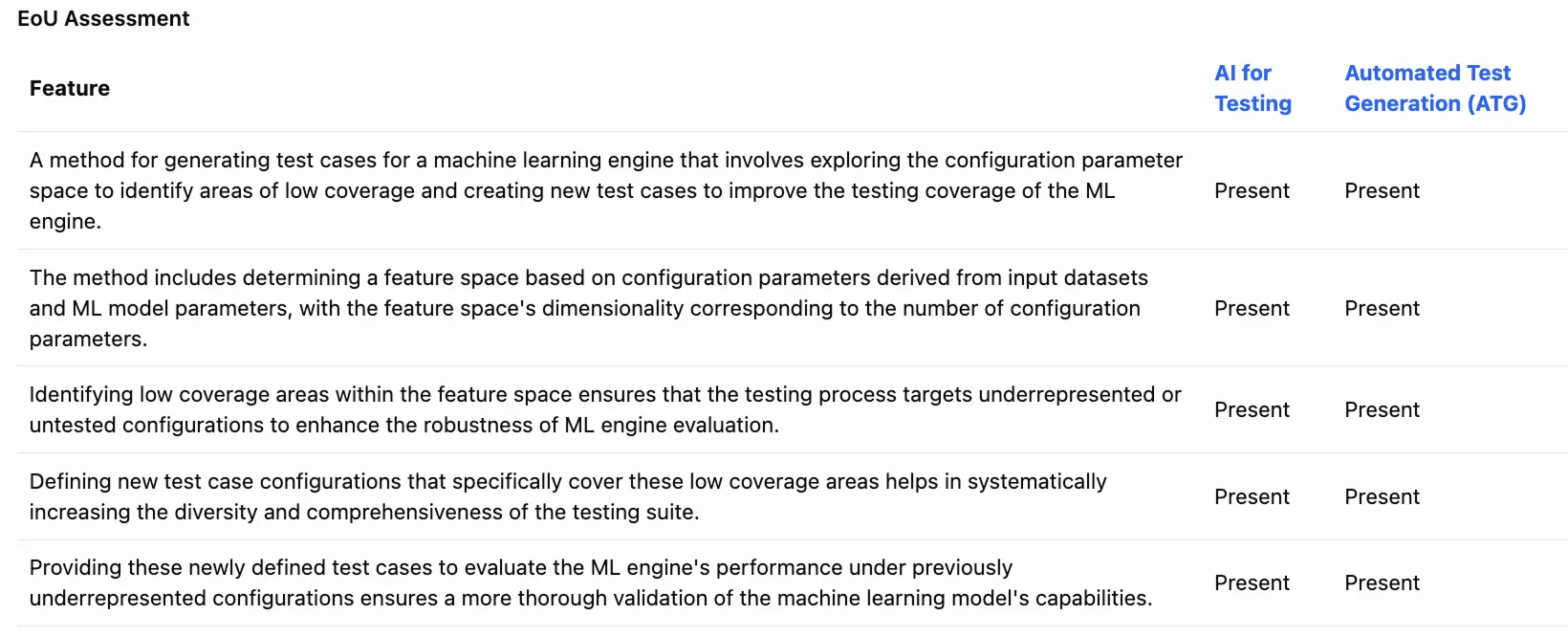
The matrix can also incorporate third-party patents for FTO purposes. For example, you could have columns for competitor patents mapped onto your product’s features, highlighting where someone else might have IP covering a feature in your product (an FTO risk). Conversely, you could map your patents onto competitor products’ features (from what you gather about their products), essentially an EoU matrix. These are extensions of the concept that bring in competitive perspective.
To accompany the matrix, the platform offers automated claim charts (similar to what Agentic Search produces for prior art, but now for product mapping). For each patent-feature pairing that’s significant, you can click through to see a detailed claim chart: on the left, the patent claim broken into elements; on the right, the product description or evidence for each element, with an indication of match. For example, a claim element “a biometric sensor configured to detect facial features” might be matched with a snippet from the product manual about the face ID sensor.
The system can generate these charts to a considerable extent automatically, pulling from its knowledge of the patent and any available product documentation or teardown reports. These EOU/FTO charts can be exported (to Excel or Word) and become extremely handy in legal contexts – whether you’re preparing a defensive non-infringement argument, an offensive licensing package, or just documenting internal knowledge.
Because this linking and visualization is integrated in the portfolio platform, it stays up-to-date. When a new product version comes out or a new patent is granted, you can quickly update the matrix. Over time, this builds an IP knowledge base that is understandable beyond the IP department. Engineers and product managers can actually see how patents map to what they’re building. It fosters greater collaboration – inventors can easily see if the idea they’re working on is already protected or where they might need to file new patents, because they can navigate via the product structure.
Standards Compliance and Interoperability
In the realm of intellectual property, data interoperability and adherence to standards are vital. Agentic Portfolio Intelligence is built with industry standards compliance in mind, ensuring that its outputs can be easily shared, audited, and accepted by others (whether they be patent offices, courts, or collaboration partners). Several measures have been taken to guarantee this interoperability:
- Flexible Export Formats: The platform offers exports in multiple formats such as CSV, or Excel. Particularly, Excel exports are enhanced to include embedded references and comments. For example, if you export a set of prior art results or a claim chart, the Excel file can have a tab with the list of references and columns for each claim element mapping. These spreadsheets are formatted for readability but also for data integrity, so that they can be shared with external counsel, partners, or decision-makers who might prefer Excel. Likewise, if sharing data with another system (like an enterprise database or another analytics tool), CSV or XML ensures smooth import. Essentially, you own your data – anything the system produces, you can get out in a standard form.
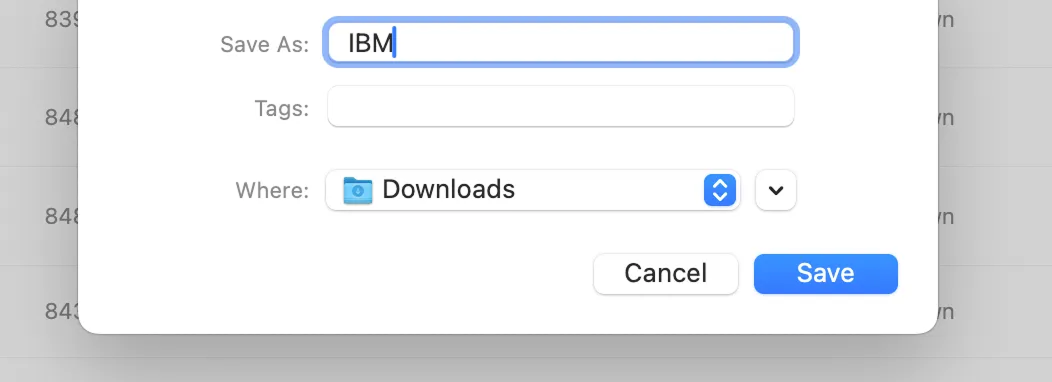
- Audit Trails and Evidence Provenance: Every analysis result from Agentic Portfolio Intelligence includes a clear audit trail linking back to source data. If the system says “Patent A is likely infringed by Product X” or “Patent B has low validity due to Reference Y,” those statements come with evidence links – such as the patent publication number and paragraph from Reference Y, or a link to the product datasheet. These can be traced and verified. The importance of this is twofold: internally, it builds trust in the AI results (users can verify the supporting evidence), and externally, it means you can present these results to third parties (e.g., in licensing negotiations, in patent committee meetings, or even in court) and they can validate the basis. The platform essentially documents the reasoning steps of its agents, including timestamps and data used, providing a transparent chain of logic. This is crucial for acceptance by third parties who might otherwise be skeptical of “black box” AI outputs. With Agentic Portfolio Intelligence, if you hand over an AI-generated claim chart or valuation report, you can also hand over the appendix of references and methodology – aligning with expectations of rigor and reproducibility in the IP community.
By ensuring a high degree of standards compliance and providing multiple interoperable output options, Agentic Portfolio Intelligence stands as a reliable part of the IP ecosystem, not a silo. Companies can confidently integrate it into their workflows, knowing that if they need to exchange data with patent offices, outside counsel, or other tools, it will be straightforward.
Technology, Hosting, and Customization
The sophistication of Agentic Portfolio Intelligence is matched by a flexible technical architecture that can adapt to different IT environments and user needs. Key considerations around integration, data security, and customization are addressed as follows:
- Robust APIs and Data Integration: The solution is built with interoperability in mind, offering RESTful APIs that allow companies to push and pull data between the platform and other systems. For instance, if a corporation has an existing IP Management System (IPMS) or docketing tool, the API can sync patent records, status updates, and even trigger analyses. You could automatically feed new invention disclosures from your internal database into Agentic Portfolio Intelligence for prior art search and rating, then push the results back to your system. Batch import/export via CSV or Excel is also supported for initial onboarding (you can import a spreadsheet of your portfolio and get started quickly) or periodic updates. In short, integration capabilities ensure the tool can slot into your existing data center workflows rather than operate in a silo.
- Enterprise-Grade Security and GDPR Compliance: Given the sensitive nature of patent data (especially before publication, or internal strategy notes), the platform is designed with stringent security measures. All data is encrypted at rest (using strong encryption standards like AES-256) and in transit (TLS 1.3 and up) to prevent unauthorized access. Role-based access controls let administrators define who can see or do what (for example, R&D folks might only see certain dashboard views, while legal has full access). For European users, the solution is fully GDPR-compliant, meaning it respects data privacy and ownership requirements. There are features for data minimization (not storing more data than necessary, and allowing purging of personal data if any, like inventor personal details, upon request), and right-to-erasure can be honored – users can delete data as needed and the system will remove all traces in backups beyond retention obligations. Audit logs track data access and changes, which is not only good for security but also for regulatory compliance (you know exactly who accessed what information when). Moreover, the platform offers EU-based hosting options – clients can choose to have their data hosted on servers located in the EU (or other specific regions) to satisfy data residency requirements. This is critical for many companies that require their IP data to stay within certain jurisdictions. Combined, these measures ensure that adopting the platform does not compromise on confidentiality or compliance; it’s as secure (or more) as traditional in-house systems.
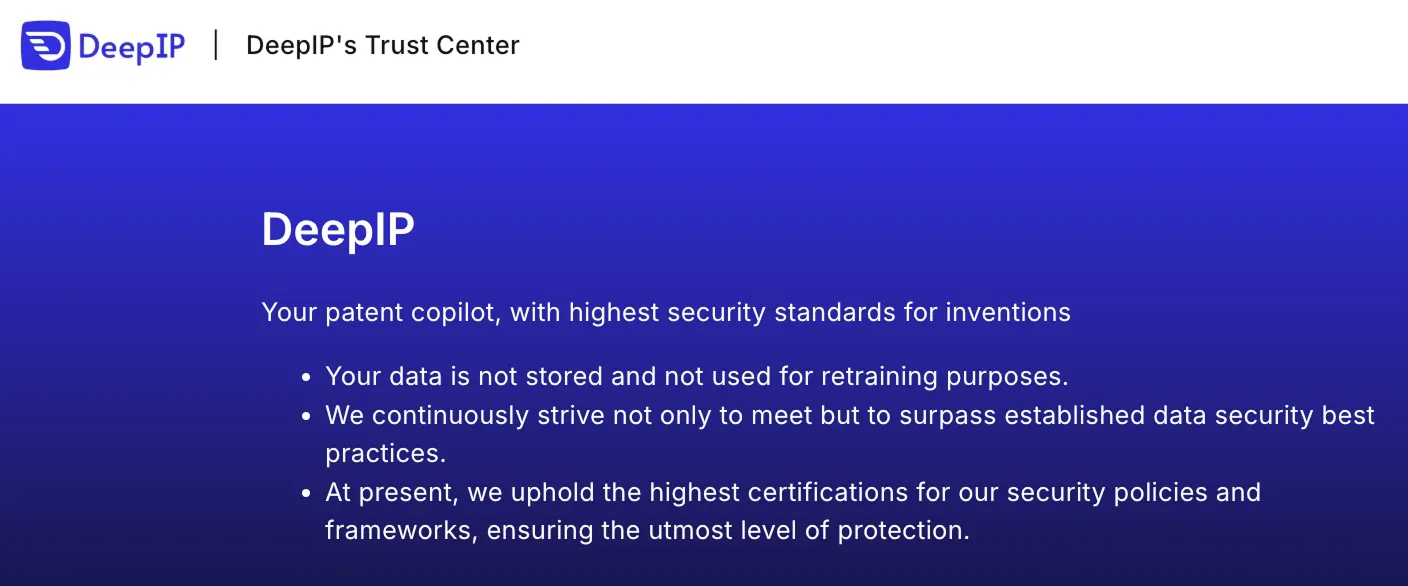
- Customization and Extensibility (Building Custom Agents/Dashboards): Recognizing that every organization may have unique workflows or KPIs, Agentic Portfolio Intelligence is designed to be highly customizable. It includes an open agent framework which allows advanced users to define their own autonomous agents or workflows. For example, a company might want a custom “valuation agent” that, when fed an invention, not only searches citations but also assess claims scope and cross-checks competitors evidence of use. The platform provides the building blocks (data access, machine learning models, etc.) and a scripting interface so these agents can be configured without starting from scratch. On the dashboard side, the UI is built on a modular architecture (using modern web frameworks). This means users can drag-and-drop to create custom dashboard views, selecting from a library of widgets (charts, tables, maps) and binding them to data or queries of their choice. For instance, you could create a dashboard focusing on a particular product line’s IP: one widget shows patent counts by jurisdiction, another shows top inventors, another is a timeline of filings vs competitor filings in that space, etc.

- Ease of the Customization Process: Despite offering deep customization, the platform emphasizes user-friendliness. Many adjustments can be done through a no-code. For example, creating a custom dashboard might be as simple as selecting components and choosing data filters via dropdowns – no coding needed. For those who do want to script custom agents, the framework provides templates and guided examples (and the support team can help in setup). Typically, a new dashboard can be configured in minutes, and a new custom agent might also take a few minutes to set up and test, depending on complexity – very fast compared to traditional software customization cycles. This agility means teams can iterate and improve their tools rapidly. If tomorrow the IP team decides to track a new metric or try a different analysis approach, they can often implement it themselves in the platform without waiting for the vendor or IT development cycles. It’s essentially an adaptive platform that grows with your needs.
In essence, the technology backbone of Agentic Portfolio Intelligence is built to be integrative, secure, and adaptable. It can plug into your environment (through APIs and connectors), meet your compliance and security needs (GDPR, encryption, logging), and bend to your way of doing things (custom workflows and dashboards) without breaking.
This makes it not just a tool, but a flexible infrastructure for patent intelligence. Companies can rely on it as a long-term solution that will accommodate new requirements, integrate with future tools, and scale as their portfolio or team scales. The ease of customization ensures high user adoption – people get exactly the views and analyses they care about, which is critical for embedding the platform into daily decision-making.
Conclusion
In a world where patents are far more than legal certificates – where they represent competitive moats, bargaining chips, and innovation barometers – managing them with mere spreadsheets and docketing software is no longer sufficient. Agentic Portfolio Intelligence elevates patent portfolio management into the strategic realm. By combining autonomous AI agents with comprehensive data integration, it transforms a static list of patents into a living, breathing strategic asset. The platform tackles the full spectrum: from consolidation and clear visualization of what you have, to deep analytics that reveal what you should do with those assets – whether it’s fortify, license, challenge, or invest.
Crucially, Agentic Portfolio Intelligence doesn’t operate in a vacuum. It brings together information from across the innovation ecosystem (patents, literature, markets, competitors) and makes it actionable, all while fitting into your existing workflows and adhering to the norms that make its insights credible to others. It empowers IP professionals to move beyond firefighting and form-filling, to truly drive innovation strategy with data-backed confidence.
The end result is a patent portfolio that works for you – highlighting new opportunities, guarding against threats, and continually aligning with business objectives. This means decisions that once took months of analysis can be made in days or hours, backed by thorough evidence. It means IP budgets can be justified and optimized with clarity on ROI. And it means that innovators, attorneys, and business leaders can finally share a common, dynamic view of how intellectual property fuels the company’s success.
By harnessing Agentic Portfolio Intelligence, organizations position themselves to extract maximum value from their IP in an increasingly competitive landscape – turning patent management from a cost center into a source of insight, value, and competitive advantage. The portfolios of the future will not just be well-administered; they will be intelligently cultivated – and this solution is a decisive step in that direction.
Sources
- AI Now Transforms Your Patent Portfolio into a Strategic Weapon - Elevate : https://elevate.law/expertise/ai-now-transforms-your-patent-portfolio-into-a-strategic-weapon/
- IBM Patents - Insights & Stats (Updated 2025) : https://insights.greyb.com/ibm-patents/
- A Hybrid Ai Framework For Strategic Patent Portfolio Pruning: Integrating Learning-To-Rank And Market-Need Analysis For Technology Transfer Optimization : https://arxiv.org/html/2509.00958v1
- AI Patent Infringement Analysis with ClaimChart LLM - XLSCOUT : https://xlscout.ai/claimchart-llm/
- Harness AI Patent Tools to Support SEP License Decision Making : https://www.lexisnexisip.com/resources/harness-ai-patent-tools-to-support-sep-license-decision-making/
- What is Patent Valuation? - Nerac : https://www.nerac.com/glossary/patent-valuation/
- How to Value Patents for Business and Legal Use - UpCounsel : https://www.upcounsel.com/valuing-patents
- European Patent Prosecution with Generative AI - Solve Intelligence : https://www.solveintelligence.com/blog/post/european-patent-prosecution-with-generative-ai
- AppColl® Pricing | Intellectual Property Management Software : https://www.appcoll.com/pricing/

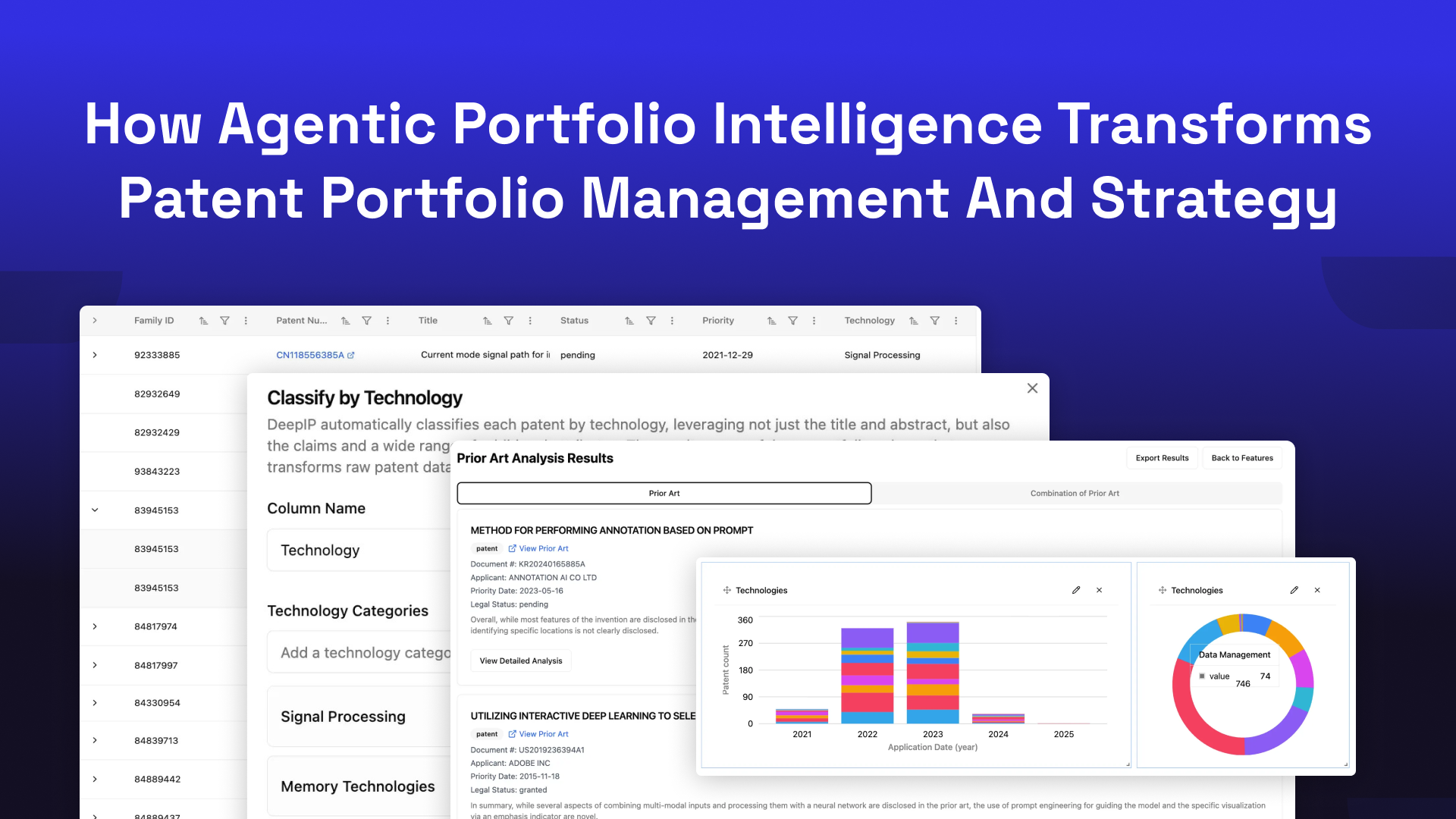
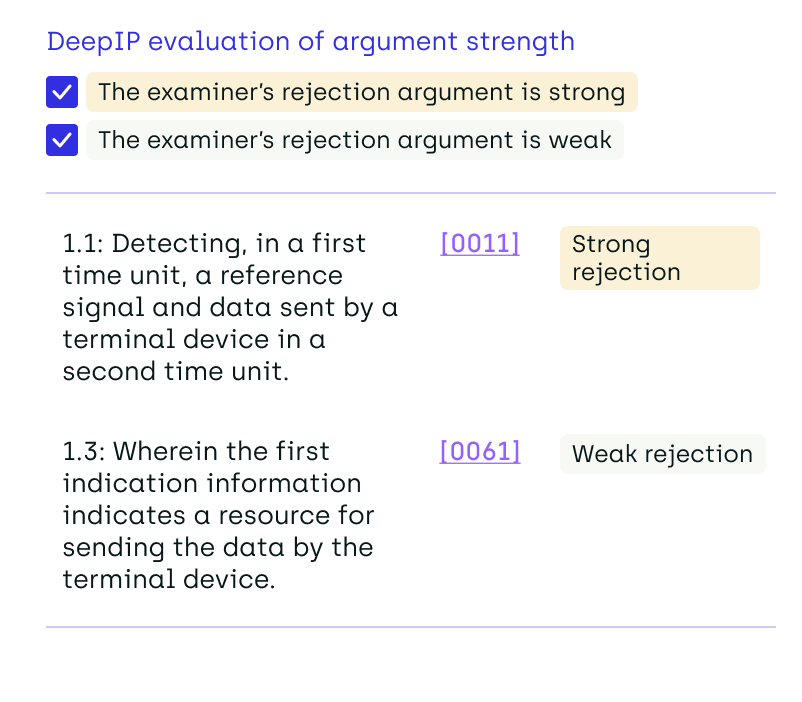
.png)
